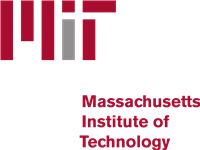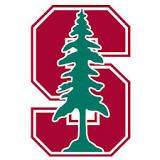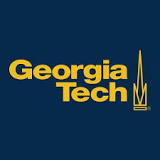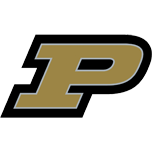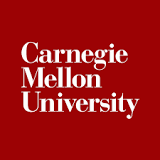What do they do?
Perform engineering duties in designing, constructing, and testing aircraft, missiles, and spacecraft. May conduct basic and applied research to evaluate adaptability of materials and equipment to aircraft design and manufacture. May recommend improvements in testing equipment and techniques.
Also known as:
Aerodynamics Engineer, Aeronautical Engineer, Aerospace Engineer, Aerospace Stress Engineer, Aircraft Design Engineer, Avionics Engineer, Design Engineer, Flight Analyst, Flight Controls Engineer, Flight Systems Test Engineer, Flight Test Engineer, Stress Analyst, Stress Engineer, Structural Analysis Engineer, Structures Engineer, Systems Engineer, Test Engineer
-
7.7%
Change
Ranks #34 in job growth rate240Job Openings
Ranks #8 in net job growth
-
Massachusetts Institute of Technology
Cambridge, MA
-
Stanford University
Stanford, CA
-
Georgia Institute of Technology-Main Campus
Atlanta, GA
-
Purdue University-Main Campus
West Lafayette, IN
-
Carnegie Mellon University
Pittsburgh, PA
Looking for colleges that offer a specific major? Use the College Match Tool to find your best-matched schools and discover your estimated Net Price!
- Doctorate or Professional Degree (7%)
- Master's degree (32%)
- Bachelor's degree (50%)
- Associate's degree (4%)
- Some college, no degree (4%)
- High school diploma equivalent (2%)
- Less than high school diploma (<1%)
People in this career often have these skills:
- Critical Thinking - Using logic and reasoning to identify the strengths and weaknesses of alternative solutions, conclusions, or approaches to problems.
- Reading Comprehension - Understanding written sentences and paragraphs in work-related documents.
- Science - Using scientific rules and methods to solve problems.
- Active Listening - Giving full attention to what other people are saying, taking time to understand the points being made, asking questions as appropriate, and not interrupting at inappropriate times.
- Writing - Communicating effectively in writing as appropriate for the needs of the audience.
- Speaking - Talking to others to convey information effectively.
- Mathematics - Using mathematics to solve problems.
- Complex Problem Solving - Identifying complex problems and reviewing related information to develop and evaluate options and implement solutions.
- Operations Analysis - Analyzing needs and product requirements to create a design.
- Monitoring - Monitoring/Assessing performance of yourself, other individuals, or organizations to make improvements or take corrective action.
- Judgment and Decision Making - Considering the relative costs and benefits of potential actions to choose the most appropriate one.
- Active Learning - Understanding the implications of new information for both current and future problem-solving and decision-making.
- Systems Evaluation - Identifying measures or indicators of system performance and the actions needed to improve or correct performance, relative to the goals of the system.
- Learning Strategies - Selecting and using training/instructional methods and procedures appropriate for the situation when learning or teaching new things.
- Systems Analysis - Determining how a system should work and how changes in conditions, operations, and the environment will affect outcomes.
People in this career often know a lot about:
- Engineering and Technology - Knowledge of the practical application of engineering science and technology. This includes applying principles, techniques, procedures, and equipment to the design and production of various goods and services.
- Mathematics - Knowledge of arithmetic, algebra, geometry, calculus, statistics, and their applications.
- Design - Knowledge of design techniques, tools, and principles involved in production of precision technical plans, blueprints, drawings, and models.
- Physics - Knowledge and prediction of physical principles, laws, their interrelationships, and applications to understanding fluid, material, and atmospheric dynamics, and mechanical, electrical, atomic and sub-atomic structures and processes.
- Computers and Electronics - Knowledge of circuit boards, processors, chips, electronic equipment, and computer hardware and software, including applications and programming.
- English Language - Knowledge of the structure and content of the English language including the meaning and spelling of words, rules of composition, and grammar.
- Mechanical - Knowledge of machines and tools, including their designs, uses, repair, and maintenance.
People in this career often have talent in:
- Written Comprehension - The ability to read and understand information and ideas presented in writing.
- Problem Sensitivity - The ability to tell when something is wrong or is likely to go wrong. It does not involve solving the problem, only recognizing that there is a problem.
- Deductive Reasoning - The ability to apply general rules to specific problems to produce answers that make sense.
- Inductive Reasoning - The ability to combine pieces of information to form general rules or conclusions (includes finding a relationship among seemingly unrelated events).
- Information Ordering - The ability to arrange things or actions in a certain order or pattern according to a specific rule or set of rules (e.g., patterns of numbers, letters, words, pictures, mathematical operations).
- Oral Comprehension - The ability to listen to and understand information and ideas presented through spoken words and sentences.
- Oral Expression - The ability to communicate information and ideas in speaking so others will understand.
- Written Expression - The ability to communicate information and ideas in writing so others will understand.
- Mathematical Reasoning - The ability to choose the right mathematical methods or formulas to solve a problem.
- Near Vision - The ability to see details at close range (within a few feet of the observer).
- Speech Clarity - The ability to speak clearly so others can understand you.
- Fluency of Ideas - The ability to come up with a number of ideas about a topic (the number of ideas is important, not their quality, correctness, or creativity).
- Category Flexibility - The ability to generate or use different sets of rules for combining or grouping things in different ways.
- Originality - The ability to come up with unusual or clever ideas about a given topic or situation, or to develop creative ways to solve a problem.
- Number Facility - The ability to add, subtract, multiply, or divide quickly and correctly.
- Speech Recognition - The ability to identify and understand the speech of another person.
People in this career often do these activities:
- Create models of engineering designs or methods.
- Test performance of electrical, electronic, mechanical, or integrated systems or equipment.
- Design electromechanical equipment or systems.
- Direct quality control activities.
- Prepare procedural documents.
- Direct design or development activities.
- Investigate system, equipment, or product failures.
- Inspect equipment or systems.
- Evaluate designs or specifications to ensure quality.
- Determine design criteria or specifications.
- Analyze design or requirements information for mechanical equipment or systems.
- Maintain operational records or records systems.
- Research engineering applications of emerging technologies.
- Evaluate plans or specifications to determine technological or environmental implications.
- Design systems to reduce harmful emissions.
This page includes data from:

 Occupation statistics: USDOL U.S. Bureau of Labor Statistics Occupational Employment Statistics
Occupation statistics: USDOL U.S. Bureau of Labor Statistics Occupational Employment Statistics
 Videos: CareerOneStop, USDOL/ETA and the Minnesota Department of Employment & Economic Development
Videos: CareerOneStop, USDOL/ETA and the Minnesota Department of Employment & Economic Development


